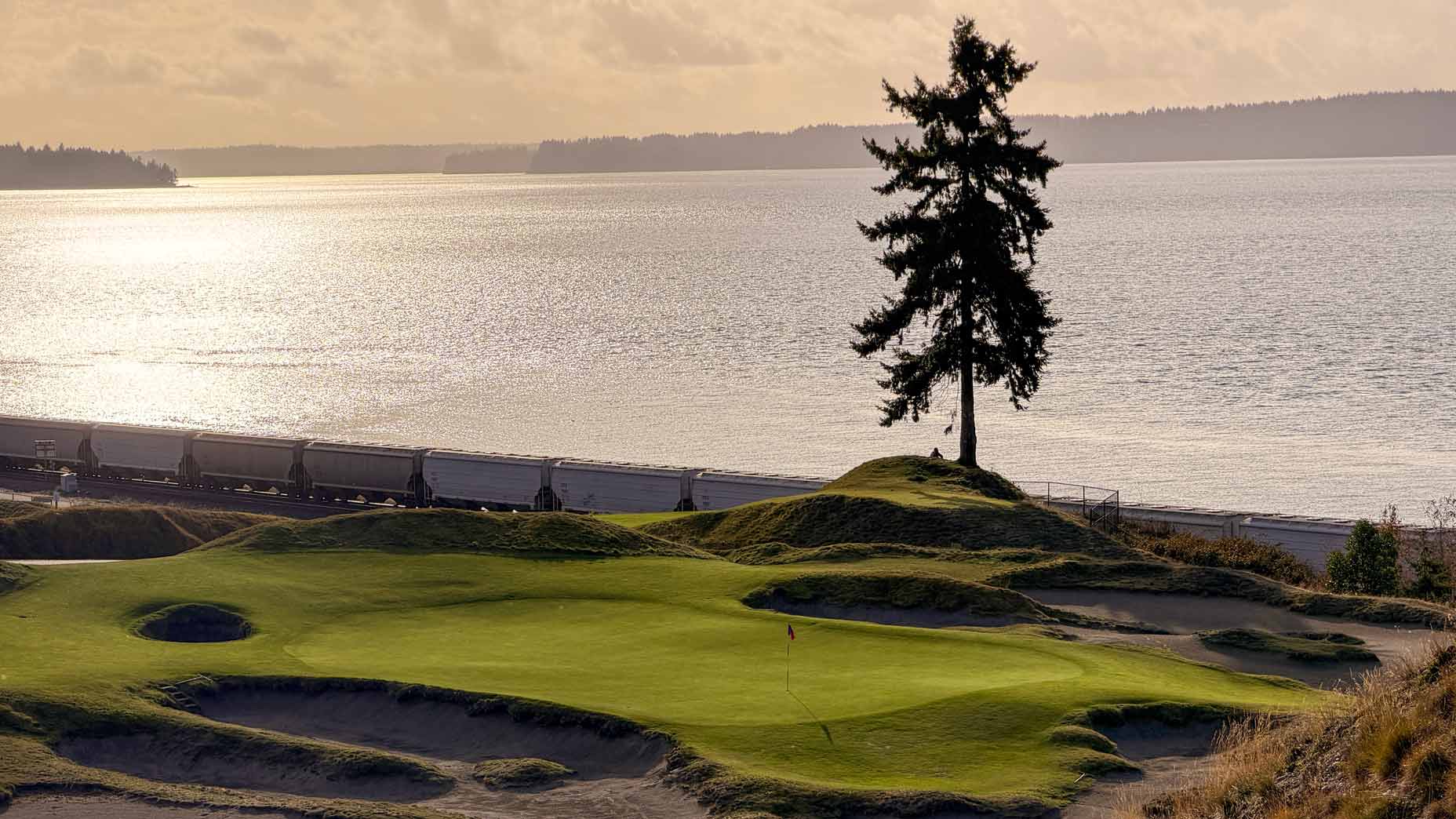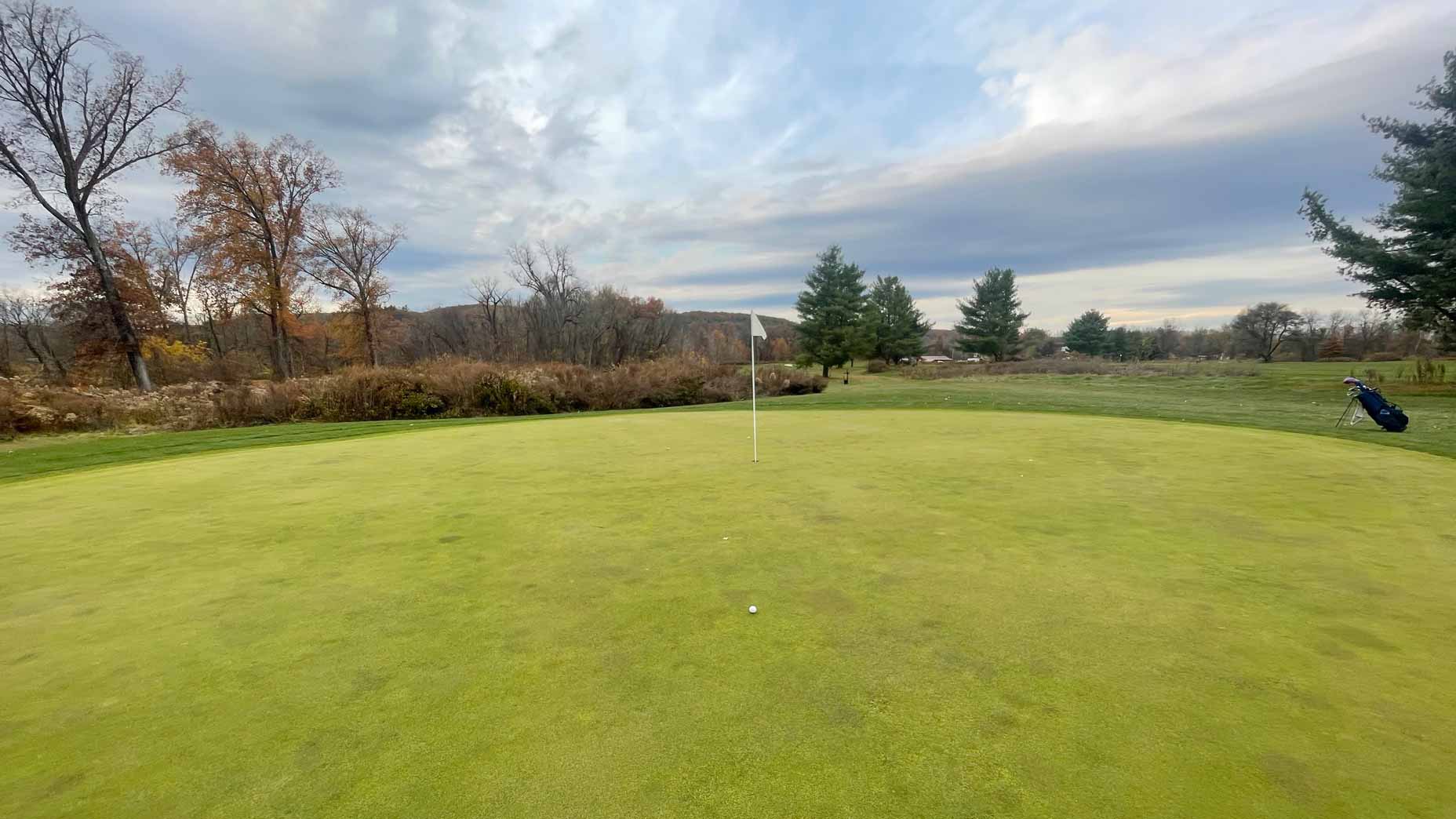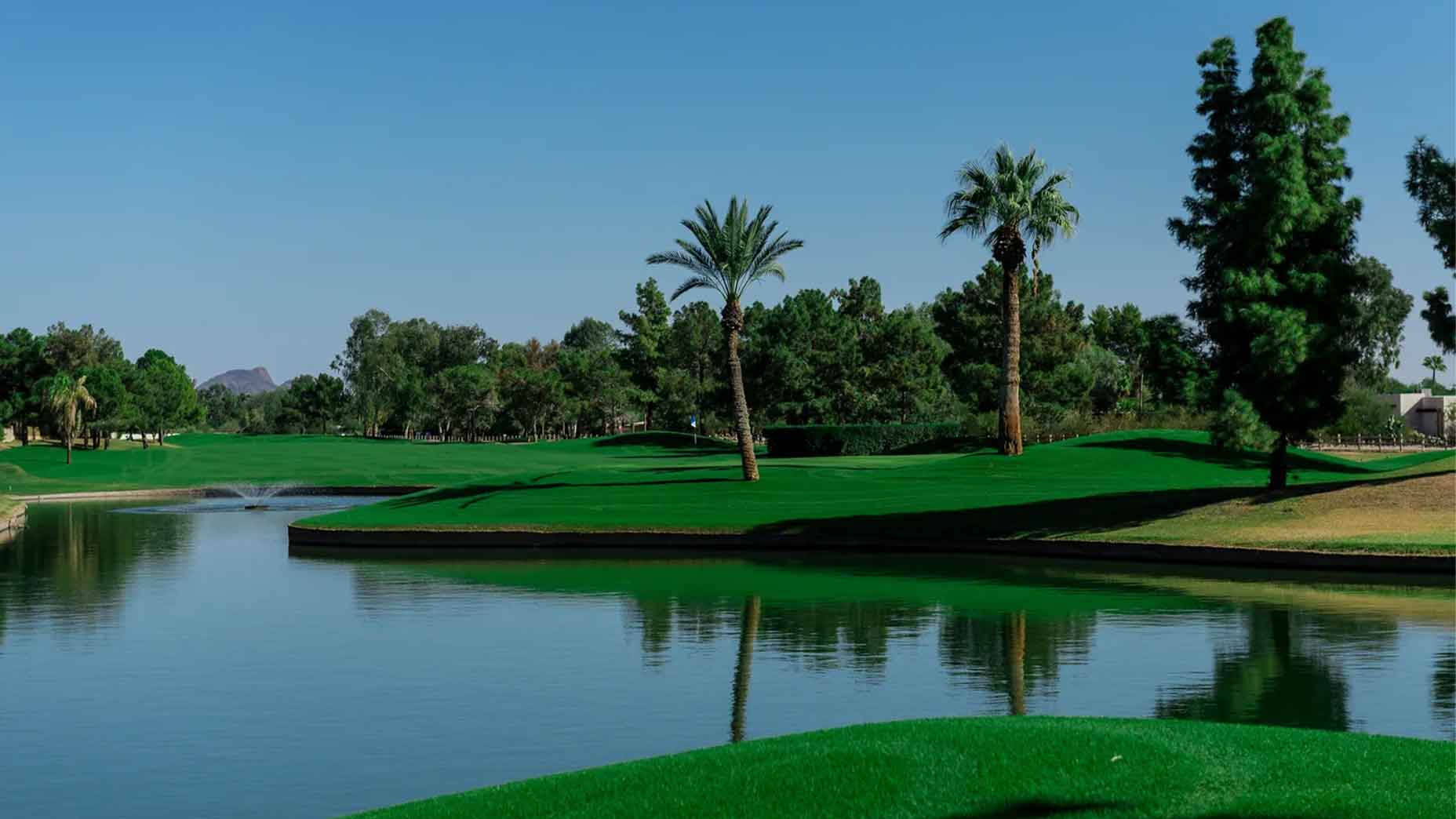One summer afternoon in 1980, long before he’d morphed from gritty golf pro to folksy TV broadcaster, Mark Rolfing was driving along the North Shore of Oahu, fresh off a dispiriting defeat. Earlier in the day, he’d coughed up a two-shot lead on the final hole of the Hawaii PGA Sectional Championship at Turtle Bay, squandering a title that would have earned him a spot in that year’s PGA Championship. To help distract him from the loss, a friend suggested that Rolfing make a quick sightseeing side-trip up the coast to the small town of Kahuku. The instructions were to take a left at the stop light. “And since there was only one stop light in Kahuku,” Rolfing recalls, “that was simple enough.”
Turning down a rutted road, Rolfing eased over a gentle rise and was treated to a view of a rumpled dunescape with fingerlings of fairway threading through it: A linkslike layout set hard beside the sea.

“I thought, Where am I, Scotland?” says Rolfing. In fact, he was at Kahuku Golf Course, a nine-hole muni that was unlike Scotland in at least one respect: Not a lot of people were playing golf. The shaggy greens and tee boxes sat mostly empty. Flagsticks listed in the trade winds. Yet even in its scraggly, semi-dormant state, the course was captivating, one of the most compelling Rolfing had seen.
Back home on Maui, where he’d lived since 1976, Rolfing went on with his life. But his brush with Kahuku lingered. Over the years, on breaks from his career as an on-course commentator for NBC, he made frequent puddle-jumps to check in on the muni, pit stops that continue to this day. The course he visits now is pretty much the same as the one he first encountered, with a tumbledown pro shop to go along with its unkempt conditions—except that it’s even quieter than ever. Its modest volume of play has dwindled to less than a foursome per hour. It averages some 260 rounds a week.
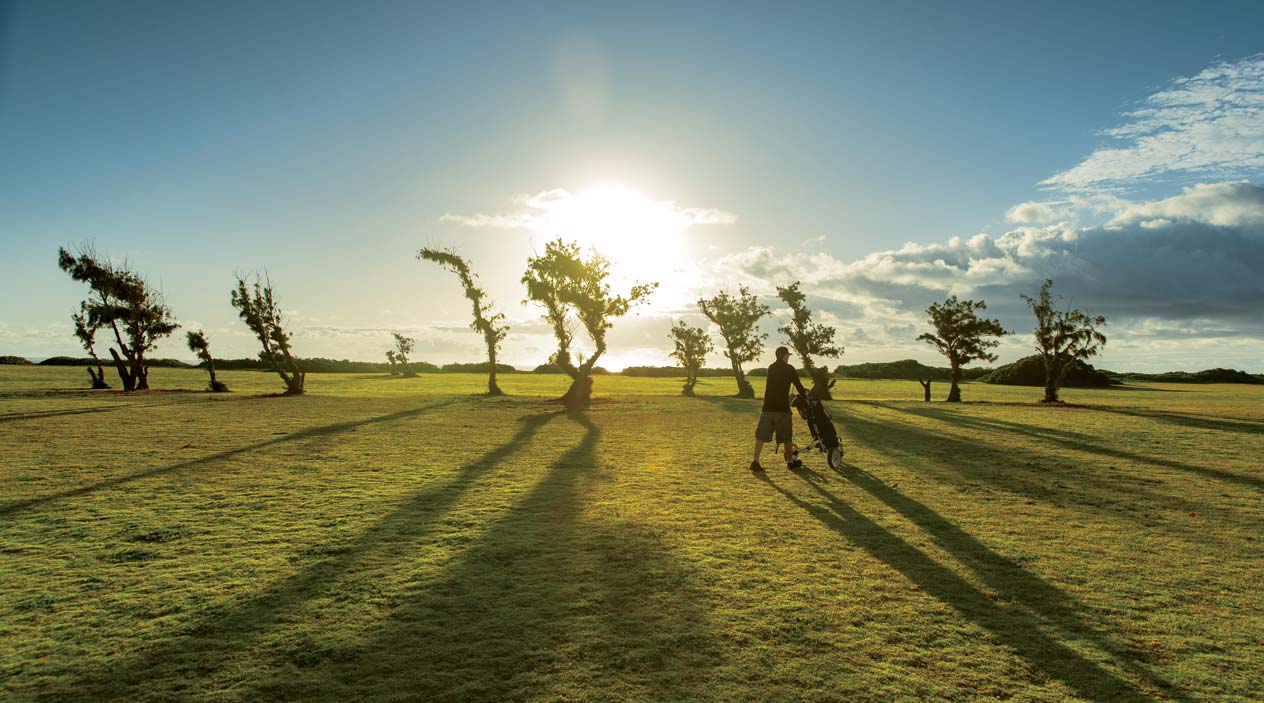
What has also changed is Rolfing’s relationship to the property. Kahuku has become his pet project, a gem he says he hopes to polish in order to preserve it. He has drafted a series of renovation plans he believes would make Kahuku a magnet for top-dollar outside play while retaining it as a budget deal for the kama’aina.
Rolfing is no stranger to golf course development; he was a force behind the creation of the Plantation Course in Kapalua. And he’s currently spearheading an effort to transform two struggling Chicago munis—the Jackson Park and South Shore courses—into a single Tiger Woods design that would remain affordable to locals. But Kahuku is a different kind of place, a humble track set on public land along a swatch of Oahu where many residents are fervently averse to change.
“Keep the country, country,” goes a North Shore slogan that appears on bumper stickers and makeshift billboards. People are wary of development; they’ve been burned before. Rolfing’s deep roots in Hawaii give him a kind of beach-cred; locals don’t regard him with the same suspicion that they might direct at someone else trying to pull off the same thing. Skepticism is more like it.
“I think it’s going to be very, very hard for him to get anything done around here,” says Joevan Joaquin, a Kahuku native who works as a starter at the course. Aside from raising money and cutting through red tape, Rolfing, Joaquin says, will have to do a lot of convincing. “We’ve had big money developers come in here trying to build homes, trying to do all kinds of things. People weren’t having any of it.”
Rolfing has no interest in building homes. But he is bent on moving forward. It is, he says, the best hope for the future of a course that he sees not only as a venue of rare beauty but also as an emblem of municipal golf itself, with all its problems and possibilities.
“In my opinion, it is the greatest remaining golf site in all of North America, but the way things are going, there’s no guarantee it will always be around,” Rolfing says. His solution is an upgrade.
“Could you build St. Andrews here?” Rolfing says. “No. Because you don’t have the history. But what you could do is build Kingsbarns.”
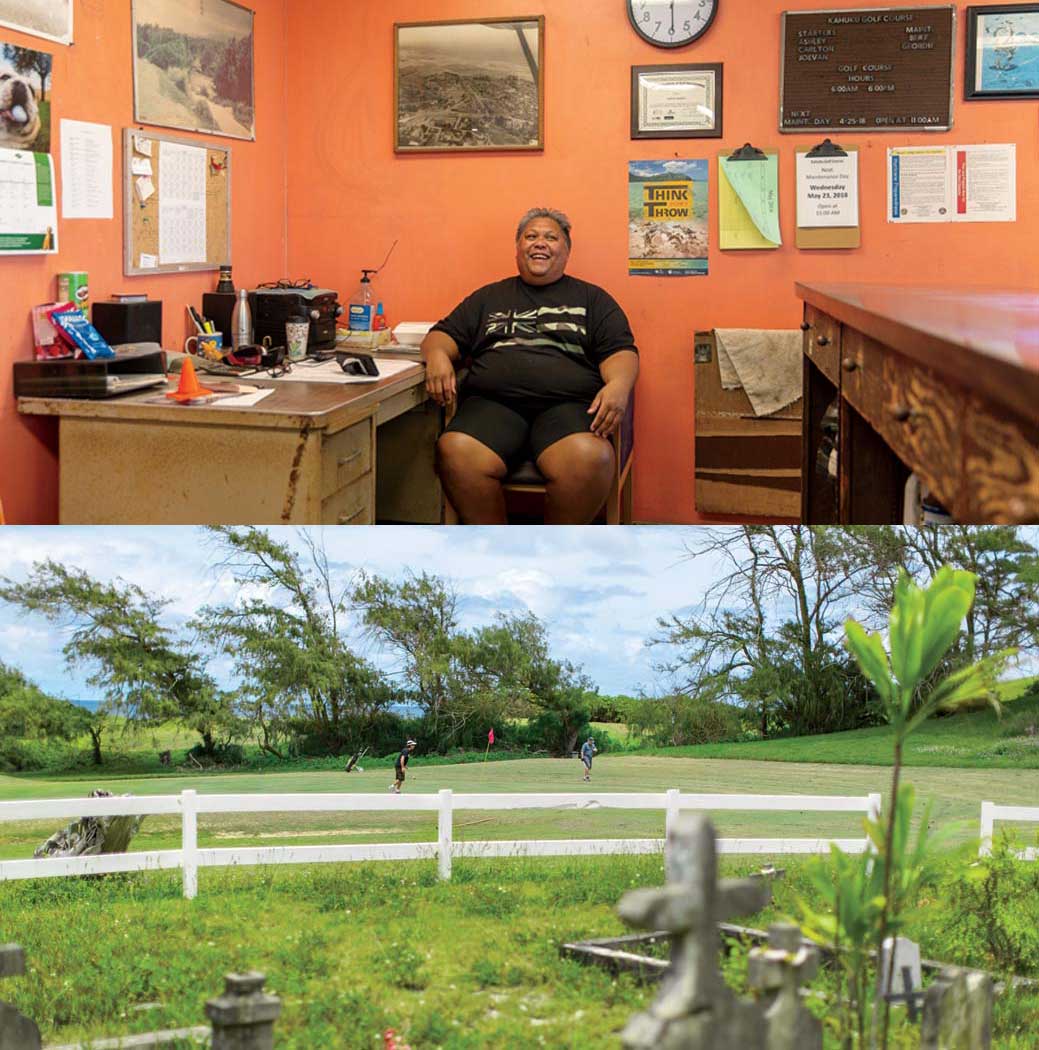
At the time of its construction, in 1937, Kahuku wasn’t meant to cause much of a stir. It was built by the Campbell family, a dynastic clan of Hawaiian sugarcane magnates who envisioned it as an amenity for select employees of the local sugar mill. The Campbells leased the property to the city, in a deal that stayed in place for nearly seven decades. Throughout those years, not a lot of headline news unfolded at Kahuku, which is not to say that nothing happened at all.
During World War II, the U.S. military flattened several fairways for use as an emergency airstrip. In 1980, the famous slack-key guitarist, Gabby Pahinui, died of a heart attack on the second hole. A number of fine players came out of Kahuku, including Lance Suzuki, eight-time winner of the Mid-Pacific Open, and PGA Tour pro Dean Wilson, who would zip over to play in his junior days from his nearby hometown of Kaneohe. To Wilson, Kahuku was magical, despite its bumpy greens and misshapen bunkers.
“It was always in rough condition,” Wilson says. “But it was just a wonderful course in an incredible setting. We’d play it for a dollar, and when we were done we’d loop it again, and no one would ever try to charge us for it.”
In 2006, the Campbells sold the course, along with 114 acres of coastal land around it, to Continental Pacific, a Florida-based developer whose executives saw Kahuku in another light: as a site for luxury beachfront homes.
That was their plan, but it died in the face of fierce local opposition. By 2017, Continental Pacific had cut and run from Kahuku altogether, selling the course and its adjacent holdings to the city for $12.1 million. In municipal hands, the course now plays the role that a lot of munis do: It provides an outlet for public recreation while losing money, year after year.
“No, it doesn’t turn a financial profit, but it does pay off in other ways,” says Garrick Iwamuro, golf course system administrator for Oahu’s Department of Enterprise Services, which runs all six of the island’s munis. “It’s a place for locals, seniors, people on fixed incomes—anyone who wants or needs an affordable place to play. They can get out with their friends and get their exercise. There’s value in that in itself, and there’s also savings, since they’re probably less likely to have to rely on the local healthcare system.”
In the commonly held Caddyshack construction, golf is a game of snobs and slobs. But the real division lies between the haves and the have-nots, those whose bankrolls or bloodlines allow them access to courses of all kinds, and those whose cash flow and connections give them limited choices. To visit the North Shore of Oahu is to see those contrasts in stark relief.

tee box of the par-3 fourth.
From posh Turtle Bay Resort and its two well-tended, 18-hole layouts, King Kamehameha Highway runs four miles along the coast into the town of Kahuku and the sleepy intersection where Mark Rolfing turned left nearly 40 years ago. The traffic signal is still there, but there is no street sign pointing to a golf course. There used to be one, but it now lies in a corner of the Kahuku pro shop, a tattered shed with a corrugated metal roof that looks like it might topple in the next strong gust.
“The termites are basically holding hands to keep this building standing,” says amiable starter Joaquin, who works the counter five days a week.
To even call the place a pro shop is an overstatement, since it sells no golf apparel or equipment; used golf balls and tees are handed out for free. The only snacks and drinks on offer come from vending machines. If you’re keen on buying a Kahuku hat or shirt, it’s suggested that you try the local high school, which hawks such souvenirs.
Joaquin is one of five employees at Kahuku, three in the shop, two on maintenance. He used to work at Turtle Bay, in golf operations, but he found the hours there long and stressful. His tenure at Kahuku has been less taxing. On rare occasions, he steps outside to bark at surfers for cutting across the course; they’re supposed to use a foot path at the far-end of the layout. Less frequently still, duty compels him to enforce the dress code, the sole requirement being that golfers wear shoes.
Tee times are available, but, Joaquin says, “no one makes them, they just show up.” Now and then, a tourist passes through. But the crowd is mostly local, a motley population reflective of the North Shore’s melting-pot demographics. Among the sunrise regulars is Curtis Mastalka, a 79-year-old California native who, in his twenties, came to Oahu for the surf and never had the urge to leave. A latecomer to golf, Mastalka worked for decades refueling airplanes at the Honolulu airport and wears a hearing aide as a result. He also wears braces on his knees and elbows. Riding a golf cart is not an option; there aren’t any at Kahuku. Some years ago, when Continental Pacific owned the course, it introduced a fleet of buggies, but the move backfired, as many locals drove the carts home and kept them or lit off from the course on grocery runs.
Mastalka doesn’t mind having to hoof it. “I’m at that age where people are asking me if I need help with my groceries,” he says. “I can’t surf anymore. I can’t do a lot of things I used to do. Golf is what keeps me up and around.”
His morning foursome isn’t always a foursome; sometimes it’s a five- or sixsome. Stalwarts of the group include Fakasiieiki Tovo, a former tennis star from Tonga who used to run the nearby Polynesian cultural center; Ned Williams, an English professor at the Oahu campus of Brigham Young University; and Maytiven Racca, a retired engineer of Filipino descent whose first name was inspired by the day he was born: May 27.
“My father chose it because he didn’t want me mistaken for anyone else,” Racca says. “It worked.”
On many days, as Racca and Co. are wrapping up, Rudy Vendiola is just arriving, ready to head out with his own regular crew. Born and raised in town, Vendiola cut his teeth at Kahuku as a boy in the ’60s, when he’d ride his bike across town to caddie for pennies or to play nine holes for a few pennies more. Now 64, he pays the current local rate of $9, but he’s looking forward to his next birthday, when he’ll get the senior discount: $7.
“There’s a reason we say keep the country country,” he says. “People around here, we’ve heard all kinds of promises before—someone is going to build this, and we locals are going to get that. But then it doesn’t happen.
“Golf shouldn’t cost a lot of money,” he says. “It should be affordable, convenient—just like this.”
Mark Rolfing is sensitive to those concerns. He says his aim is to address them, not inflame them. His proposed blueprints for Kahuku range in scope, but all involve preserving the course through improvements. One plan he’s drawn up would expand the layout to 18 holes by acquiring or leasing land on either side of it. Another would maintain the current footprint but with major renovations and rerouting. At the very least, Rolfing says, Kahuku deserves a little TLC; better-defined fairways and bunkers would do wonders for it, as would fewer weeds and dead spots on the greens.

For now, Rolfing’s blueprints are just that, and any iteration of them would likely face obstacles from local opposition, budgetary limits, bureaucratic sloth, or some combination of those three. But doing nothing, Rolfing says, is not an option; the numbers aren’t sustainable. On Oahu, as in many places, municipal play continues trending downward. Of the island’s six munis, only one, Ala Wai, in crowded Waikiki, operates in the black, and even it is not as busy as it once was. This past April, Olomana, an affordable public track on Oahu’s windward east side, shuttered without warning; behind on rent and on payments to a vendor, the course had its golf carts repossessed. Though Olomana has since reopened, it was an ominous sign.
The other big news in Oahu golf this spring was the plan to build a Topgolf on the driving range at Ala Wai. As part of its contract with the county of Honolulu, Topgolf will be called upon to put money into a municipal golf improvement fund—around $1 million a year over the first two years of operation and $500,000 a year in perpetuity, according to Iwamuro of Oahu’s golf division.
Rolfing, who helped facilitate the Topgolf deal, believes it makes good sense. But he says it’s just a start, one of several ways to energize Oahu’s flagging munis. Upgrading Kahuku, and charging a premium for outsiders to play it, would be another: The haves of the golf world supporting the have-nots.
Not everyone on the North Shore would embrace that approach. Rolfing understands that. There’s plenty to be said for keeping the country country. But not when resisting change puts you at risk of losing one of the most country places of all.
“Affordable, accessible golf on a beautiful course like this—that’s the lifeblood of the game. We have to make sure to protect it for future generations,” Rolfing says. “If you let things just keep deteriorating, at some point they collapse. And wouldn’t that be a shame?”




